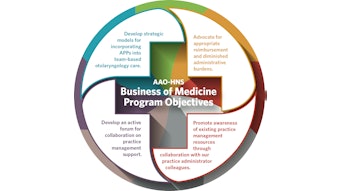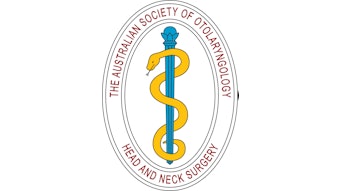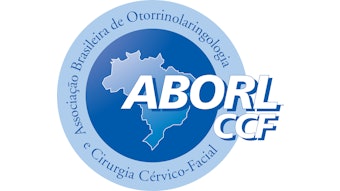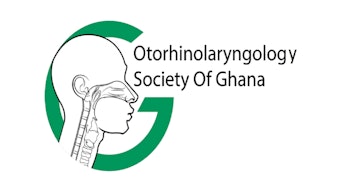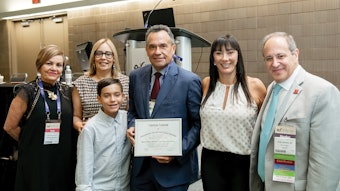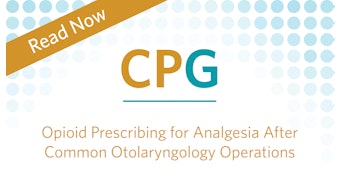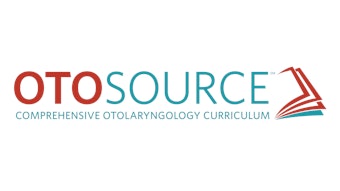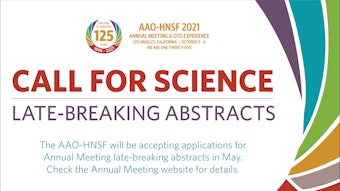AAOA Publishes "Targeted Molecular Therapies in Allergy and Rhinology” (Damask C. et al) to Help Otolaryngologists
The past decade has seen a rapid expansion in the use of biologic drugs for the treatment of numerous chronic inflammatory diseases.
Haidy A. Marzouk, MD
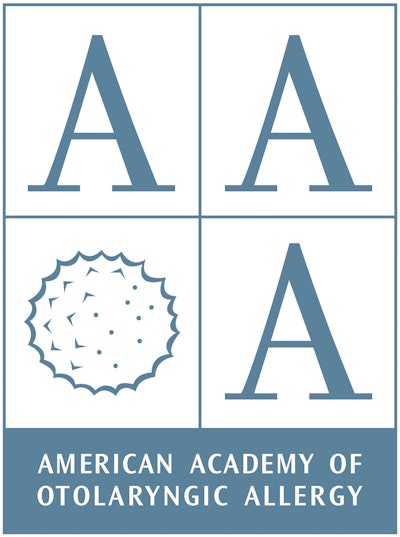
Chronic allergic and eosinophilic diseases in the head and neck are characterized by Type II inflammation, and thus amenable to targeted molecular therapy with biologics which block this pathway. Endotypes of chronic sinusitis, including chronic sinusitis with nasal polyposis (CRSwNP), aspirin-exacerbated respiratory disease (AERD), and eosinophilic granulomatosis with polyangiitis (EGPA) display Type II inflammation and can be treated with biologic drugs. Other atopic disorders displaying mechanisms of Type II inflammation include asthma, atopic dermatitis (AD), and chronic spontaneous urticaria (CSU), which have all been treated with biologic therapies in recent years.
Allergic Type II inflammation is driven by Th2 lymphocytes leading to an allergen-specific IgE response via mediators with a variety of cytokines, including IL-4, IL-5, and IL-13. IL-5 is central to eosinophilopoiesis, and to the maturation, activation, and survival of eosinophils. There is a parallel pathway involving non-allergic Type II inflammation where Type II differentiated innate lymphoid cells (ILC2s) cause similar eosinophilic inflammation. As a result of these pathways, tissue damage and cycles of chronic inflammation ensue. Biologics, having the ability of antibodies to target a specific molecule, have allowed successful targeting of Type II inflammatory pathway mediators.
Omalizumab is a monoclonal anti-IgE antibody that inhibits IgE binding to CD23 receptors and consequent cross-linking of IgE on mast cells and basophils. When IgE levels decrease, high-affinity receptors are down regulated as well. Mepolizumab and reslizumab are monoclonal antibodies binding to IL-5 preventing it from binding to its receptor. This results in reduction in production and survival of eosinophils. Benralizumab targets the IL-5α receptor on eosinophils and basophils. This prevents IL-5 binding and induces a cell-mediated cytotoxicity of eosinophils resulting in apoptosis. Lastly, IL-4 and IL-13 fuel inflammatory responses and affect more cell types beyond eosinophils. Dupilumab is a monoclonal antibody that binds to the IL-4α subunit, inhibiting IL-13 and IL-4 signaling and decreases IgE production by about 40%.
Biologics in CRSwNP
In the United States, CRSwNP is predominately characterized by Type II inflammation. The mainstay of treatment has been corticosteroids (oral and topical), sinus surgery, and sometimes antibiotics. However, some patients suffer with a severe, refractory form of CRSwNP that does not respond well to corticosteroids and sinus surgery. For these patients who continue to suffer despite appropriate medical and surgical therapy, biologics offer a promising option. Dupilumab was the first FDA-approved biologic for treatment in CRSwNP. In Phase 2 and 3 clinical trials, dupilumab improved nasal polyp score, olfaction, SNOT-22, and LMK CT score in CRSwNP patients with and without asthma, and reduced the need for systemic corticosteroid use in comparison to placebo controls. Dosing of 300 mg SC every two weeks can be performed at home by the patient (first dose in office) and is well tolerated with infrequent adverse effects. However, studies have shown that after cessation of treatment, symptoms tended to recur back to the pre-treatment levels, thus necessitating continuous treatment for an extended period of time.
Omalizumab was the second biologic agent that was FDA approved as an add-on treatment of nasal polyps. Several randomized, placebo-controlled trials have shown efficacy for omalizumab in patients with CRSwNP, demonstrating improvement in nasal polyp score, QOL, olfaction, and symptoms, compared to placebo-controlled groups.
Biologics in the Unified Airway
Otolaryngologists are in a unique position to appreciate the connection between upper and lower airway diseases. Biologic drugs have been in use for asthma for years prior to the approved indication for CRSwNP. Asthma patients who are oral corticosteroid dependent or who have poor symptom control despite appropriate therapies are candidates for biologic therapy as an add-on treatment if increased eosinophils or fractional exhaled nitric oxide (FeNO) are noted. Omalizumab, anti-IL-5 agents, and dupilumab are all approved as add-on treatments for asthma. As a group, these agents consistently show reduction in asthma exacerbations and improvement in pulmonary function. Selection of specific biologic therapy includes consideration of the potential for treatment responsiveness, patient preferences, age, weight, convenience of setting for injection, and cost. Omalizumab and mepolizumab have an indication down to six years of age. Omalizumab requires administration in a medical care setting whereas mepolizumab, benralizumab, and dupilumab can be administered at home or by a healthcare provider. For uncontrolled asthma in patients with perennial allergies, omalizumab is an option which can target both diseases. Anti-IL-5 agent use may be limited by a low peripheral eosinophil count. Studies on dupilumab suggest a better therapeutic response with elevated FeNO levels.
Patients with AERD have shown improvement in symptoms with biologic therapies. AERD (formerly Sampter’s Triad) is an endotype of chronic sinusitis where asthma is triggered by nonsteroidal anti-inflammatories and is contingent on cyclooxygenase 1 inhibition. Appropriate treatments include the use of corticosteroids (oral and topical), leukotriene modifiers, aspirin desensitization, and sinus surgery. However, patients with AERD often have a more severe and recalcitrant form of CRS and can benefit from treatment with biologic drugs. Prospective studies of omalizumab in patients with AERD demonstrated improvement in upper and lower respiratory tract symptoms with decreased levels of LTE4 and PGD2 metabolites. A retrospective study of mepolizumab showed that after three doses, eosinophil counts, SNOT-22 scores, and FEV1 improved in patients with AERD. A sub-study of a Phase 2 trial of dupilumab for AERD showed improvement of olfaction, SNOT-22, and nasal polyp score.
EGPA is characterized by eosinophil rich, necrotizing granulomatous inflammation, and vasculitis that involves the respiratory tract and other organ systems. These patients often have severe asthma and tissue eosinophilia. The diagnosis is primarily based on clinical parameters. These patients often are steroid-dependent, which are effective in 90% of patients, but they may require additional immunosuppressive therapy. Mepolizumab is FDA approved for the treatment of adults with EGPA with dosing of 300 mg once every four weeks. A randomized placebo-controlled trial showed that treatment with mepolizumab resulted in more weeks of accrued remission, a higher remission rate, improved asthma scores, and a longer time course to the first major relapse of disease compared to placebo controls.
Dermatologic Disease and Biologics
CSU and AD are allergy-related disorders that can manifest in the head and neck and have immunologic pathophysiologies which are amenable to treatment with biologic agents. CSU is characterized by hives for more than six weeks with no apparent trigger. H1 antihistamines are the mainstay of treatment, although some patients continue to suffer despite treatment. Potential add-on therapies include leukotriene antagonists, oral corticosteroids, cyclosporine, dapsone, and methotrexate. Omalizumab is FDA approved for the treatment of CSU in adults and adolescents who remain symptomatic despite use of antihistamines. Dosages are 150 or 300 mg subcutaneously every four weeks. AD diagnosis is primarily clinical and characterized by pruritus, eczema, a chronic relapsing history, and typical morphology and age-specific distribution patterns. Treatment involves nonpharmacologic interventions as well as topical corticosteroids, calcineurin inhibitors, and crisaborole ointment. Dupilumab is FDA approved for treatment of patients who are over six years old with moderate-to-severe AD who do not respond to other treatments. Typically, adult patients will receive a 600 mg subcutaneous loading dose followed by 300 mg subcutaneously every two weeks.
Biologics drugs offer exciting treatment options for patients with severe and refractory chronic inflammatory diseases of the head and neck. The decision to choose biologic agents focuses around the failure of standard appropriate medical therapies, patient-centered decision-making, dosing schedules, treatment setting, and cost. Insurance coverage and cost-utility remain a concern as these agents require significant financial expenditures with long-term treatment needed. While the short-term safety has been established, there may be long-term consequences of blockade of inflammatory pathways, which is yet unknown.
The AAOA plans to stay at the forefront by providing education on the latest treatment strategies for allergic and inflammatory immune disorders that affect the head and neck. This round-table discussion and subsequent publication provide a thorough summary of the use of biologics in otolaryngology. It is an exciting time in medicine as we are able to provide new options to help those patients with the most severe airway diseases.
References
1. Damask CC, Ryan MW, Casale TB, Castro M, Franzese CB, Lee SE, Levy JM, Lin SY, Lio PA, Peters AT, Platt MP, White AA. Targeted Molecular Therapies in Allergy and Rhinology. Otolaryngol Head Neck Surg. 2021 Jan;164(1_suppl):S1-S21.

